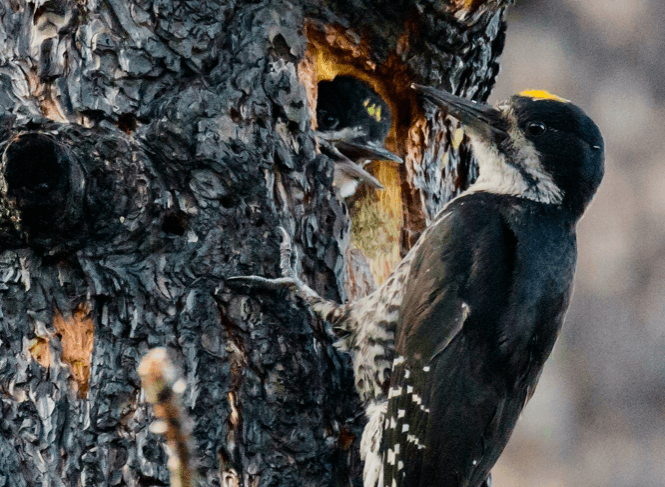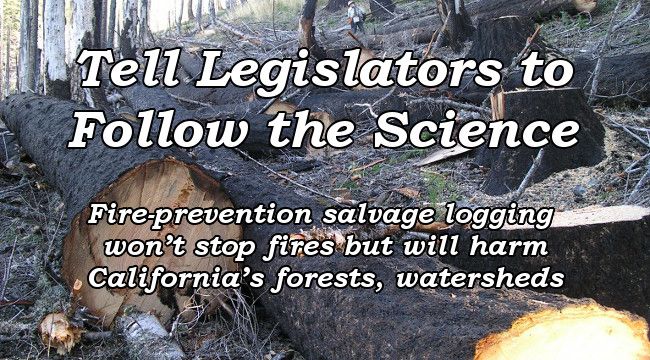As wildfire science rapidly evolves amidst controversy we need sensible forest policies
In the last year many issues that Forests Forever has been instrumental in shaping over the years came into relief as they never have before: salvage logging and clearcutting, assessment of cumulative watershed effects from logging, forest carbon sequestration, and agency restructuring and accountability, to name a few.

In California field trips, meetings with natural resources academics, public hearings and other settings we were an insistent and well-informed presence, backed up by our grassroots network of supporters (such as you) who placed calls, and wrote letters and emails.
Before the deadly Camp Fire had cooled in November 2018 there were cries in the media, especially social media, and in the Capitol and other public forums to "reduce fuels" to prevent such a fire from recurring.
In fact, later analyses showed, before it reached the towns of Paradise, Magalia and Concow the fire from its point of origin moved through a large area heavily logged starting in 1997, subsequently burned in the Butte Fire of 2008, then worked over by both commercial logging and salvage logging ( "hazardous fuels reduction," in the parlance of Plumas National Forest's management), purportedly to reduce wildfire risk.
But these steps removed shade, exposed soils and vegetation to direct sunlight, and left woody debris and smaller, more-flammable trees in their wake; it helped create a smooth runway for the fire that later torched the towns in a rain of embers.
As we had before and have since the Camp Fire, we argued for using our always-scarce public resources not on salvage logging projects—which makes fires like these worse—but rather on home hardening: installing exterior sprinklers and ember-proof attic vents, using non-flammable roofing materials, and the like, as well as discouraging building in fire-prone areas.

We found ourselves arguing a similar case earlier this year alongside our allies John Muir Project, Sequoia ForestKeeper, and others as we opposed the Rim Fire Project, centered in the Stanislaus National Forest near Yosemite.
After this 2013 fire logging-focused officials in California agencies collaborated with the U.S. Forest Service to wrangle a grant of $70 million from a federal fund intended for disaster relief from such events as hurricanes, floods, and tornadoes. The grant would salvage-log about 4000 acres of the burn area, incurring enormous damage to soils and wildlife habitat, and sending most of that timber off to be burned in dirty industrial biomass facilities to generate electricity.
The Sierra Nevada Conservancy, the lead California agency administering the grant, pushed the project through despite mounting opposition. Since we fully expect more such projects to emerge in the years ahead we have experience now that will come in handy to put forward increasingly effective campaign efforts.
We lobbied in the state Capitol and other venues for better education and training requirements for Registered Professional Foresters and for a more-efficient restructuring of CalFIRE to reduce conflicts between the agency's dominant firefighting role and its neglected-but-critical logging-regulatory mission.
With our allies at Why Forests Matter and Sierra Club California we pushed to shape policies that will restore healthier forests by retaining more big trees, to better store carbon in vegetation and soils, and to restrict or ban clearcutting.